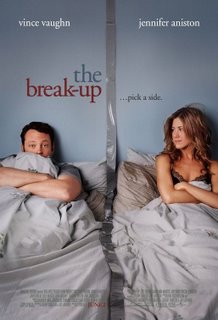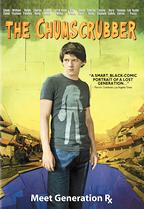 Richard E. Grant is one of those charming actors who makes everyone and everything around him look good. Who could forget his exuberant performance as Withnail in 1987’s cult classic Withnail & I ? (“I must have some booze!”) At the other end of the scale, he was quite possibly the best thing in 1997’s Spiceworld, as the now-defunct girl band’s manager. So I was interested to see if his infectious talent would spread to Wah-Wah, his first outing as a writer/director – and I’m pleased to report it certainly does.
Richard E. Grant is one of those charming actors who makes everyone and everything around him look good. Who could forget his exuberant performance as Withnail in 1987’s cult classic Withnail & I ? (“I must have some booze!”) At the other end of the scale, he was quite possibly the best thing in 1997’s Spiceworld, as the now-defunct girl band’s manager. So I was interested to see if his infectious talent would spread to Wah-Wah, his first outing as a writer/director – and I’m pleased to report it certainly does.Based on his own childhood experiences, Wah-Wah is set in the south-west African nation of Swaziland, as it approaches independence from its colonial mistress Great Britain at the end of the 1960s. The film opens with young protagonist (and Grant’s alter-ego) Ralph Compton witnessing his mother’s adultery, and goes on to show the devastating alcoholism that grips his father in her wake. The film also follows several other characters within the small expatriate community the Comptons inhabit, where the British stiff upper lip fails to completely hide the heated passions and cloying hypocrisy.
Zachary Fox and Nicholas Hoult play Ralph at 12 and 15 years respectively, and both do a fine job. Discovering your parents aren’t infallible is a journey every child takes, and Ralph’s is a sweet one to watch. Both actors convincingly convey the devastating loss of Ralph’s mother, and the growing up he has to do to deal with his father. Ralph’s inner rage manifests in a puppet-like grimace, but as director Grant never lets the character sink into self-pity.
Gabriel Byrne gives a stellar performance as Ralph’s father Harry, a top education official who’s all easygoing charm during the day, but turns into a beast once his begins his daily bottle of scotch. Some of his drunk scenes tend towards melodrama, but or the most part his portrayal of two men inside the one body is hauntingly real. Miranda Richardson as Ralph’s selfish but desperate mother Lauren is marvelous – but then she very rarely puts a foot wrong, especially in character pieces like this. Julie Walters also gives a delightful performance as Gwen, who finds herself having to start all over again when her husband dumps her.
 But the star is Emily Watson as Ruby, an American flight attendant that Harry meets and marries in six weeks. It’s a cliché, but she really is a breath of fresh air compared to the staid British ex-pats. It’s Ruby who coins the phrase “wah-wah”, referring to the posh baby talk the Brits use to communicate (“hush-hush”, “hubbly-jubbly”, “toodle pip”). Watson plays her with just the right mix of bravado and sensitivity, and Ruby’s relationships with Harry and Ralph are truly touching.
But the star is Emily Watson as Ruby, an American flight attendant that Harry meets and marries in six weeks. It’s a cliché, but she really is a breath of fresh air compared to the staid British ex-pats. It’s Ruby who coins the phrase “wah-wah”, referring to the posh baby talk the Brits use to communicate (“hush-hush”, “hubbly-jubbly”, “toodle pip”). Watson plays her with just the right mix of bravado and sensitivity, and Ruby’s relationships with Harry and Ralph are truly touching.The only disappointing aspect of Wah-Wah is its forgettable soundtrack, but it’s a minor quibble. It’s a credit to Grant that he got his story to screen in the first place (especially if you read some of the incredible hassles he outlines in his latest book, The Wah-Wah Diaries), and even more so that he managed to do so in such a touching and believable way.



 Judith Lucy
Judith Lucy

